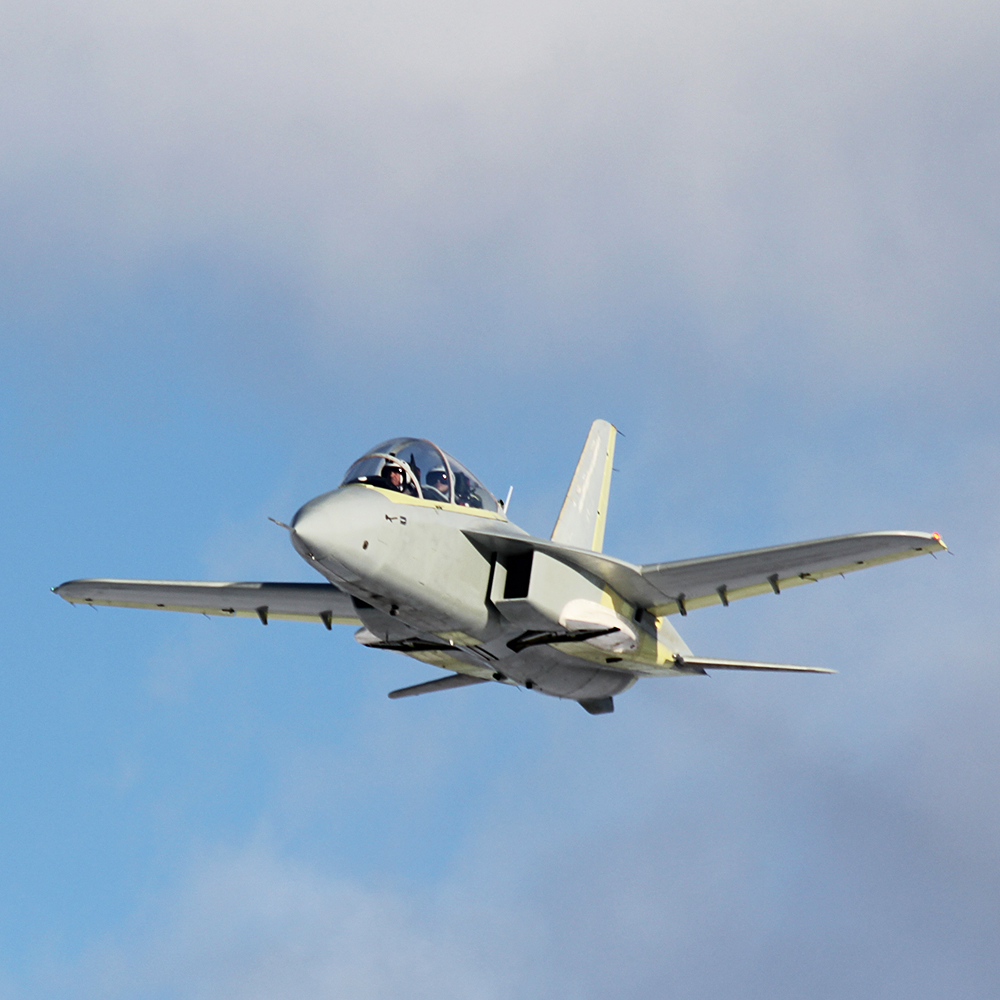The SR-10: Russia’s first private trainer

SR-10.
Sat-kb/wikipedia.orgThe first flight of the SR-10, a light dual-pilot jet trainer aircraft, caused a sensation when it took off in late December 2015. It was the first time ever in Russian aviation that a private design bureau had built a plane from scratch, without public financial support. Given the aircraft’s stated capabilities, it can edge out aircraft produced by the aviation industry's big guns from the market.
A prototype unmanned aerial system is being designed on the basis of the SR-10. It will include the UAV Argument, which is an unmanned version of the SR-10. Information on this development has already been submitted for discussion by representatives of the Ministry of Defense, but a decision on the future of the UAV is yet to be made.
The trainer aircraft SR-10, fully assembled from domestic components, is proposed as an intermediate trainer between the light Yak-152, which is designed for the basic flight training of military pilots, and the trainer/attack aircraft Yak-130. This niche is currently occupied by the Czech L-39.
Designed in Moscow, built in the Caucasus
"The Russian air force needs an easy, simple and inexpensive jet trainer to replace the L-39 fleet, and the Russian military are showing interest in the SR-10 project," said Maxim Mironov, director of the Modern Aviation Technologies Design Bureau, in an interview with the industry website AviaPort.
SR-10: General characteristics and performance
Maximum takeoff weight: 2.7 tons;
Range: 1,000 miles;
Speed: up to 600 mph;
Crew: 2 people.
"The MiG-AT, a simpler and cheaper plane compared to the Yak-130, failed to be delivered, and now there is a gap between the basic trainer Yak-152 and the trainer/attack aircraft Yak-130," said Mironov.
Developed by the private design bureau in Moscow and built by aircraft manufacturers at a factory in Makhachkala in Russia’s North Caucasus republic of Dagestan (for which it received the nickname of "Dagestani"), the SR-10 is a single-engine jet aircraft, fitted with a single forward-swept wing, allowing for excellent maneuverability.
The somewhat unusual aerodynamic design, which gives the aircraft a futuristic look, makes piloting the aircraft easier. The machine even forgives some pilot errors that inevitably arise in the training process.
What’s more, the aircraft has no restrictions on performing aerobatic figures. Air cadets can execute the same spectacular stunts in the SR-10, as in fourth- and fourth-plus-generation combat aircraft (Su-27, Su-35, MiG-29).
Private aircraft industry breakthrough
"This is a breakthrough in private aircraft construction. To create a jet is a high level of technology for any country," Viktor Galenko, pilot and head of the Aviator.guru website, said in an interview with RIR.
"The SR-10 has a very low operating cost compared to other machines. It is very simple to manufacture. The machine is good for training cadets and for pilots' training in the army, meaning less expenditure on the very expensive resources of military aircraft," said Galenko.
Video by Elijah Titorenko / YouTube
The aircraft is currently being tested at the Gromov Flight Research Centre in Moscow, with plans underway to build the first 16 SR-10 aircraft later this year. Mass production is likely to begin in 2017.
The developers expect that the Russian military will be happy with the aircraft, and the Aerospace Forces will be able – for the first time in history – to adopt a plane developed by a private design bureau without the involvement of public funds.
The Ministry of Defence is waiting for the end of the testing and, if successful, is ready to buy four of the aircraft. The Modern Aviation Technologies Design Bureau has estimated the military department's needs at 100 SR-10 aircraft in the next four years.
The SR-10 has also attracted interest from the military of a number of foreign countries, where military pilots fly the same Czech L-39 as their Russian colleagues. At present the export potential of the aircraft is estimated at 200 machines.
All rights reserved by Rossiyskaya Gazeta.
Subscribe
to our newsletter!
Get the week's best stories straight to your inbox